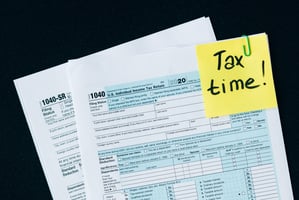Many of us picture retirement as the time we get to harvest the fruits of our labor and spend time...
Blog: Making the Most of An Employer’s Match
Many employees are aware that one of the best retirement savings options is an employer-sponsored 401(k) plan. 401(k) plans are incredibly popular because they allow participants to save money for retirement with many additional benefits like pre-tax contributions and a wide breadth of investment options that accumulate tax-deferred earnings. However, one of the largest benefits is the matching contribution employers can make in the plan. What many employees may not know, is that employers can also make matching contributions in nonqualified deferred compensation plans (NQDCPs). It is important for NQDCP participants to fully understand their plan benefits to ensure they are making the most out of their plan.
What is the NQDCP match and how does it work?
There are three primary ways an employer can match contributions in an NQDCP:
- a deferral match on dollars deferred up to a certain percentage of compensation (just like a 401(k) match),
- a restoration match (also known as a 401(k) make-up match), and
- an excess compensation match (match on deferrals from compensation above the IRS Compensation limit, which is $345,000 for 2024).
While not all companies offer all three types of matches in their NQDCP, it is important for participants to understand what matches are available and how they work. By taking advantage of deferral matches offered by their employer, NQDCP participants can accrue retirement savings at a faster rate than with individual deferrals alone.
For example, if the match is a restoration or 401(k) make-up match, you will not receive incremental match with a deferral to the NQDCP. Restoration matches are designed to make up for – or restore – any lost match in a 401(k) plan due to participation in the NQDCP. That is because deferrals into the NQDCP come off the top of gross compensation, and the amount left over is then eligible for contribution (and match) for purposes of the 401(k) plan. In other words, NQ deferrals reduce 401(k) eligible compensation, and therefore participants may receive a lower match in the 401(k) plan. The restoration or 401(k) make-up match simply credits that amount to the NQDCP so the participant doesn’t lose any match.
If the plan sponsor offers an excess compensation match, participants will receive additional match even after their pay has gone above the IRS compensation limit. The excess compensation match is typically offered at an equivalent match calculation that is offered through the sponsor’s 401(k) plan.
Illustrated below are two common NQDCP match scenarios:

Among eligible employees, NQDCPs serve as a popular retirement savings tool for those who understand the features and benefits the plan offers. By maximizing an employer’s match, NQDCP participants kick their retirement readiness into overdrive in an effort to be more prepared for the road ahead.

.jpg?height=200&name=401k%20Landscape%20Changes%20(1).jpg)

